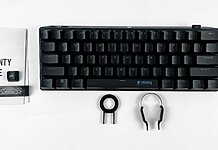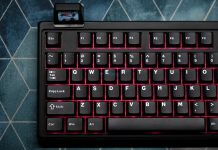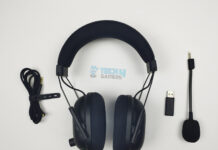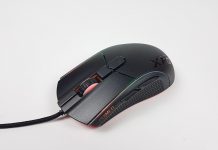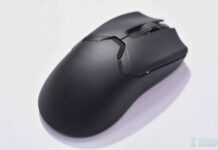Performance That’s Hard to Beat
Review Summary
Apart from bleeding-edge performance, the Wooting 80HE builds upon the legacy of its predecessor by improving in all the areas in which the original fell short. The new Lekker V2 switches paired with factory lubed screw-in stabilizers significantly upgrade the stock sound. And the gasket mount allows for a soft and thocky typing experience that only acts as a cherry on top of the world-class gaming keyboard the Wooting 80HE already is.
Hours Tested: 5 Days

Overall
-
Build Quality - 7/10
7/10
-
Design - 8/10
8/10
-
Typing Experience - 8/10
8/10
-
Performance - 10/10
10/10
-
Value - 7.5/10
7.5/10
Pros
- Hall-effect switches with dynamic actuation points
- Rapid Trigger and SOCD features
- LED Bar adds visual flair and extra functionality
- Clean design with minimal branding
- Satisfying stock typing experience
- Factory-lubed PCB-mount stabs
- Vibrant RGB with loads of effects
- Wootility is the best keyboard software
Cons
- No wireless support
- Build quality can be better
- Still pricey, especially with new competitors around
When Wooting began making analog keyboards back in 2016, no one foresaw them as the next step for gaming keyboards as a whole. A lot has changed since then. Hall-effect sensors skyrocketed and got into controllers and keyboards. Today, the spectrum looks something like this: you either get a barebones kit and build a custom, or you buy a Wooting to get that competitive edge.
But the throne is always for the taking. Seeing Wooting’s success, particularly with its “rapid trigger” feature, the market saw an overnight revolution. Big names like Razer and Steelseries were quick to jump in, but it was the budget offerings that brought the gift of hall effect to the masses. With competition all around them now, can Wooting still wear the crown?
Key Takeaways
- The Wooting 80HE is a wired gaming keyboard that stands out for its innovative hall-effect switches, rapid trigger technology, and polished Wootility software, offering cutting-edge performance for serious gamers.
- You should go for the Wooting 80HE if you want a high-performance keyboard loaded with features.
- You should skip the Wooting 80HE if you need wireless connectivity or prioritize sound and typing feel over performance.
Here are the key specs:
| Specifications | |
|---|---|
| Switches | Lekker L60 V2 |
| Keycaps | PBT, ABS and Dye sub-options are available |
| Case | PCR ABS or Zinc alloy |
| Stabilizers | Screw-in stabilizer |
| Switch plate | White polycarbonate (PC) plate |
| Sandwich pad | Silicone |
| PCBA | Wooting 80HE |
| Cable | 2-meter USB-C to C nylon braided cable |
| Dimensions | 346 x 142mm |
| Weight | PCR ABS: 790 grams Zinc alloy: 2160 grams |
Unboxing Experience
The Wooting 80HE comes in a simple yet elegant cardboard box with one tab in the center, keeping it secure. Apart from the name plastered across the front, there’s minimal branding around the package. Opening the box reveals the Wooting sitting underneath a nice plastic dust cover. The accessories are laid out behind a marked flap at the top.
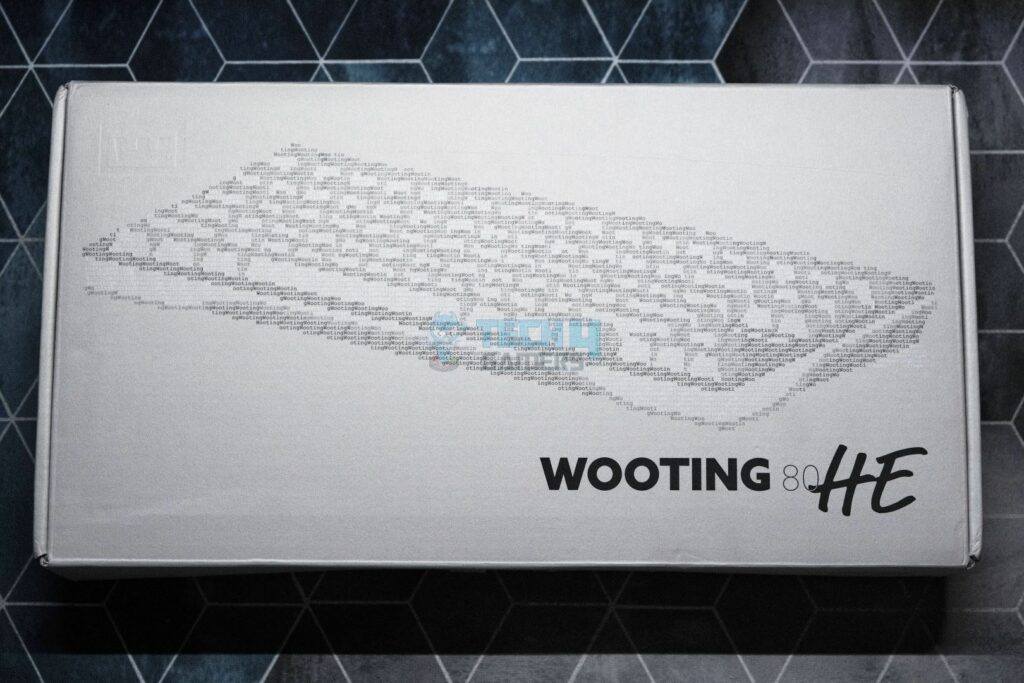
Since the Wooting 80 can also be purchased as a module without switches and case, the unboxing experience can vary depending on what config you choose. Our Wooting 80 unit is prebuilt and made out of ABS plastic, but there’s a see-through polycarbonate and zinc alloy (metal) case as well that you can buy separately.
Package Contents
- 1x Wooting 80HE
- 1x Dust Cover
- 1x Switch-Insert Instructions Card
- 1x USB-C to C braided cable
- 1x Keycap/Switch Puller
- 3x Spare L60 switches | 1x Spare L45 Switch
- 4x Heighted Rubber Feet
- 4x M2x5 Spare screws
- 7x Additional Keycaps
- 1x Post Card
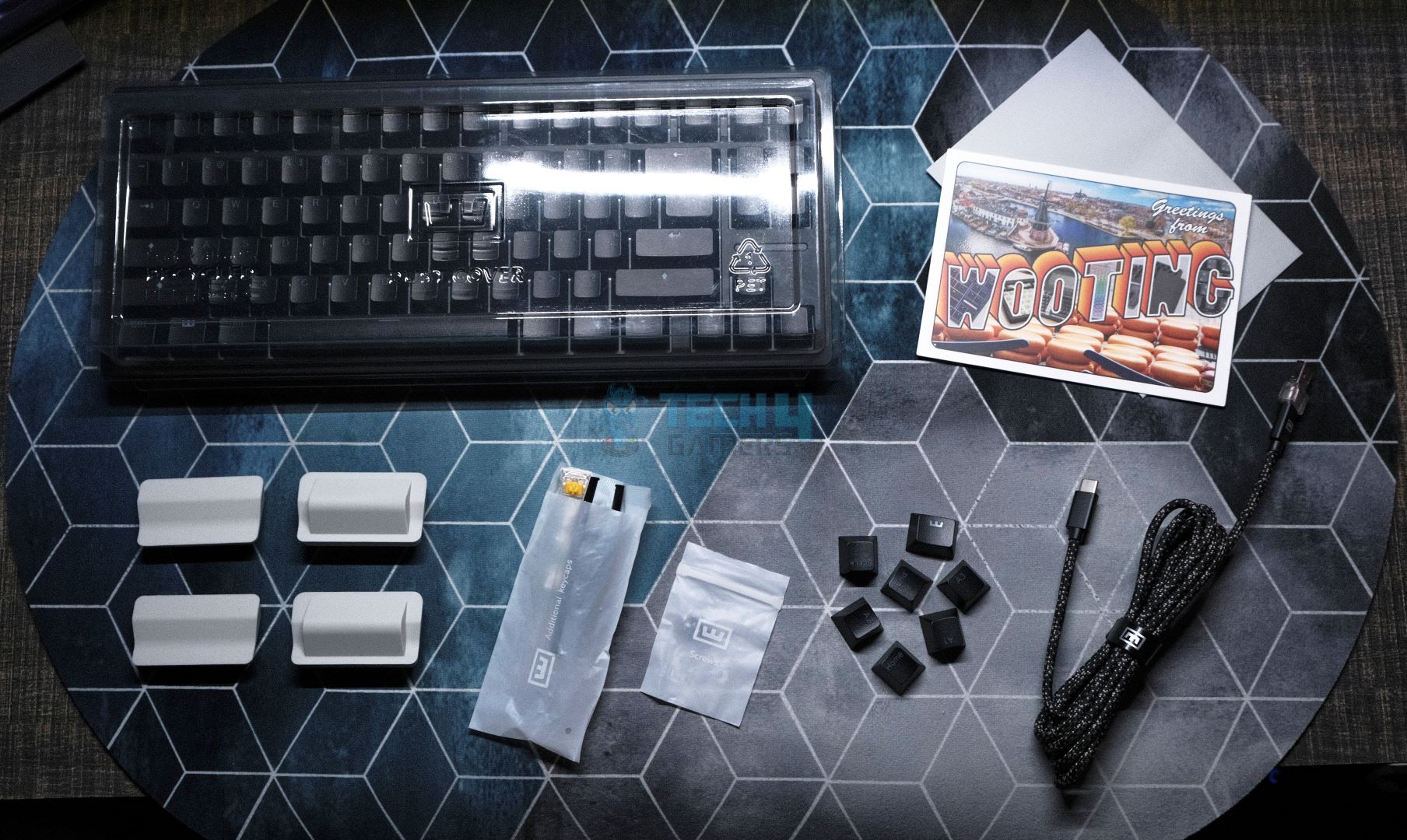
Design & Build
The plastic case is well-made, feels solid, and has no blemishes. It’s as good as any other mainstream gaming keyboard but a touch below the plastic used in budget customs like those from Aula and Epomaker. There is absolutely no creaking, though the board does flex if you force it to.
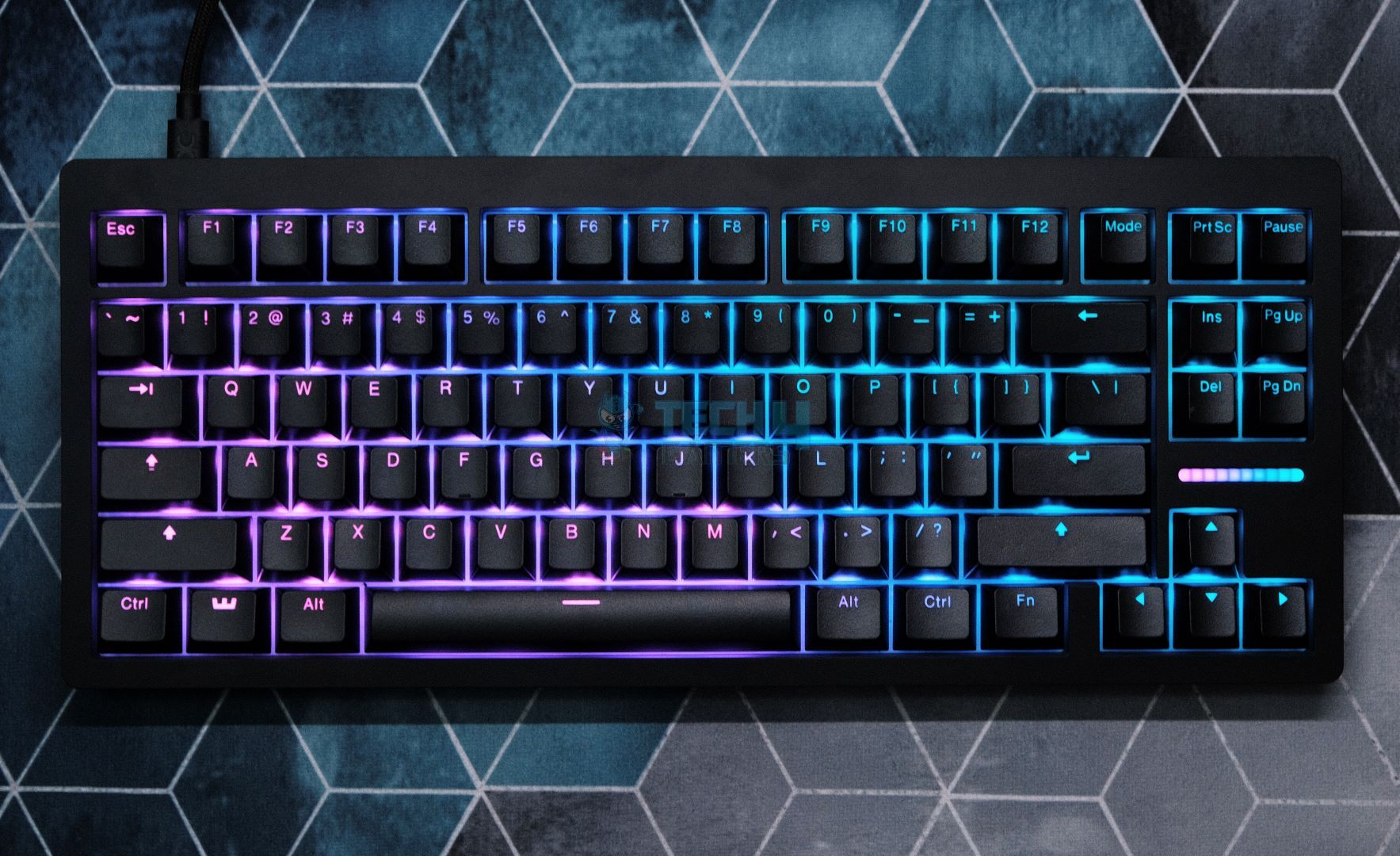
Design-wise, Wooting has kept it simple with a clean aesthetic upfront consisting of no branding and uniform bezels all around except the forehead. The only standout element is the LED Bar on the left, above the arrow keys. This is fully customizable in the software and can actually go beyond just a visual flourish; more on that later.
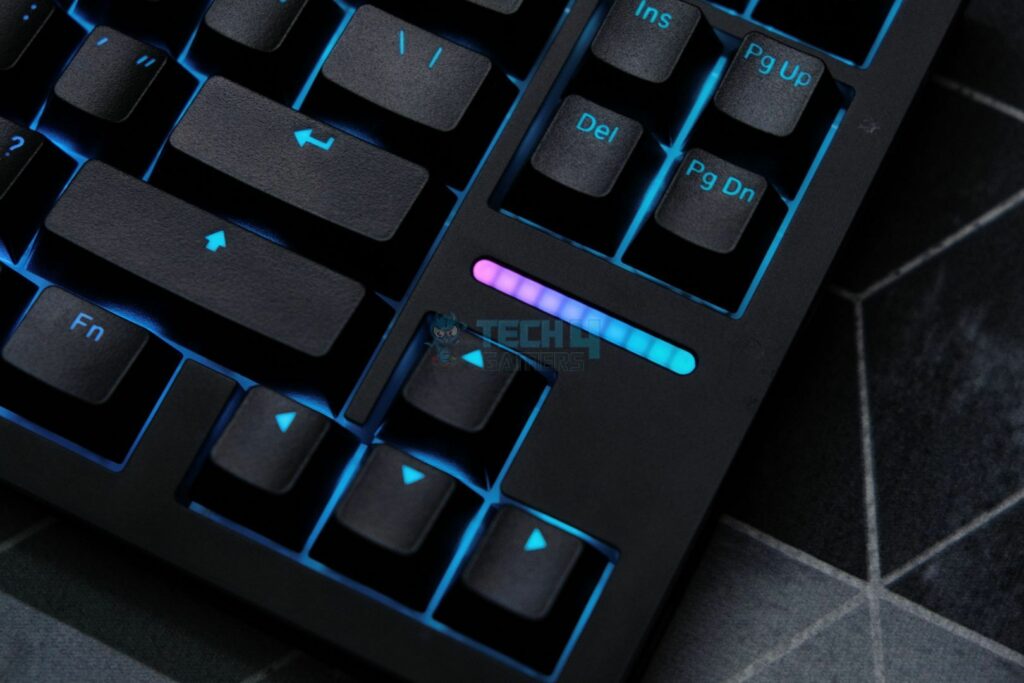
On the back, you’ll see five rubber feet, of which the top two are responsible for height adjustment. You can swap those for the taller ones provided in the box to add some height. I appreciate Wooting trying something new in place of just generic flip-out feet, but the implementation seems half-baked; you now have to worry about one extra element for everyday usage that can easily get lost.
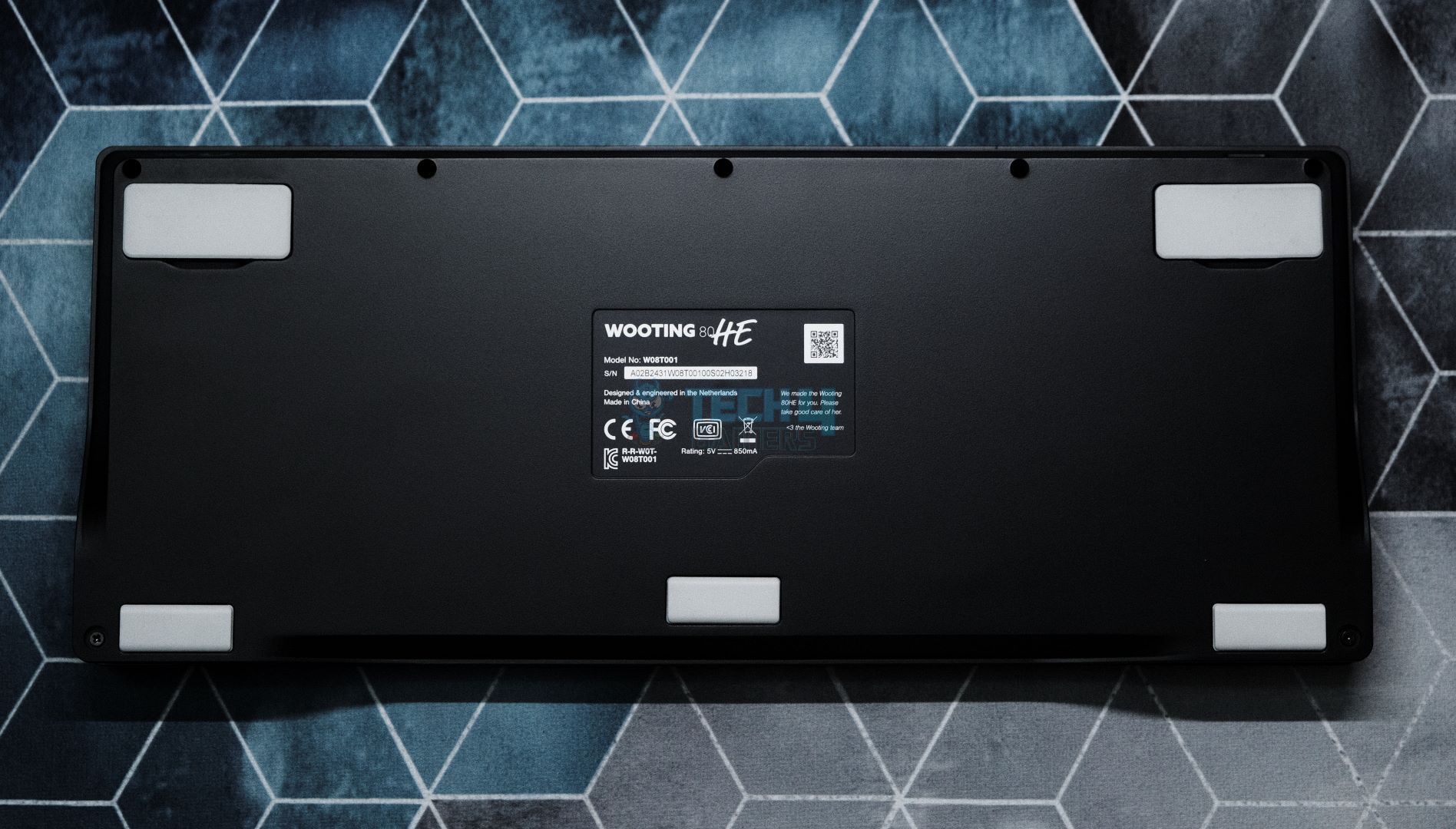
Moving on, the side profile of this keyboard is somewhat unique; it’s not a simple box on a wedge, which even expensive customs are guilty of, but rather a sleek downward curve. The front height is 19mm here which means it’s just about comfortable to type on without a wrist rest.
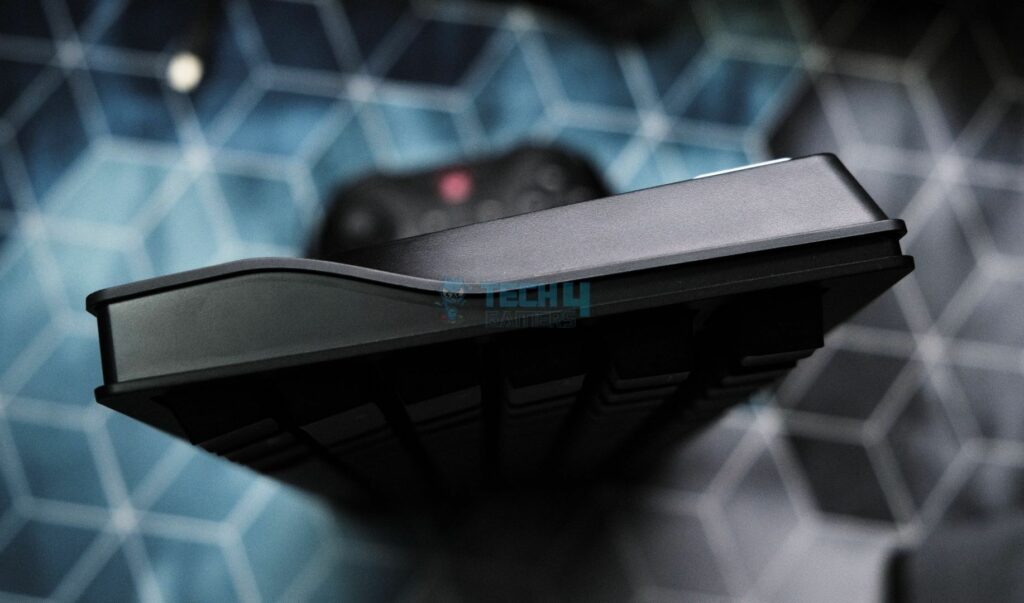
Layout & Features
As the name suggests, the Wooting 80HE is an 80% keyboard with a layout that’s sort of in between a 75% and a proper TKL. You still get your function row, the arrow keys and even the nav cluster but some keys like Home and End are Del. There’s also a “Mode” key up top next to F12 which technically makes this an F13 layout.
You can use that key to quickly switch between different profiles set up in the Wootility software if you want to Alt-Tab, from popping heads in Overwatch to writing your overdue college essay.
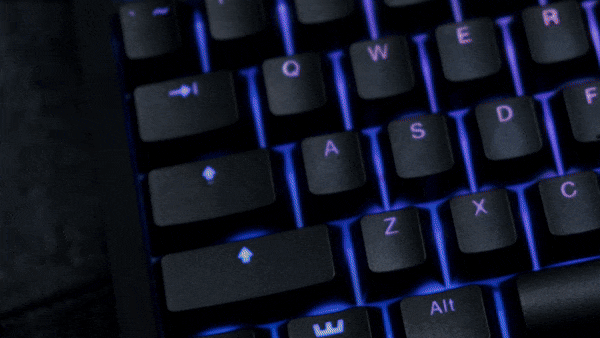
Wooting 80 is wired only so there’s no battery life or wireless performance to be worried about. That being said, this board does have true 8000hz polling rate because it combines that with an 8000hz input scan rate as well. I’d strongly suggest using the provided USB-C cable instead of a custom coiled one to ensure you’re getting the best out of that PCB.
Speaking of which, Wooting 80 has a fully hotswap PCB that is compatible with other hall-effect switches. It has no flex cuts and is 1.6mm thick. While the default layout is ANSI with a 6.25u spacebar, the company also makes ISO and JIS versions that you can select at the time of buying.
Lastly, the keyboard is gasket mounted using the plate foam that sits between the PCB and the polycarbonate plate. This absorbs impact better, according to Wooting, but in my experience there’s practically no give here and the typing experience isn’t bouncy. That kind of defeats the purpose of going with gaskets in the first place.
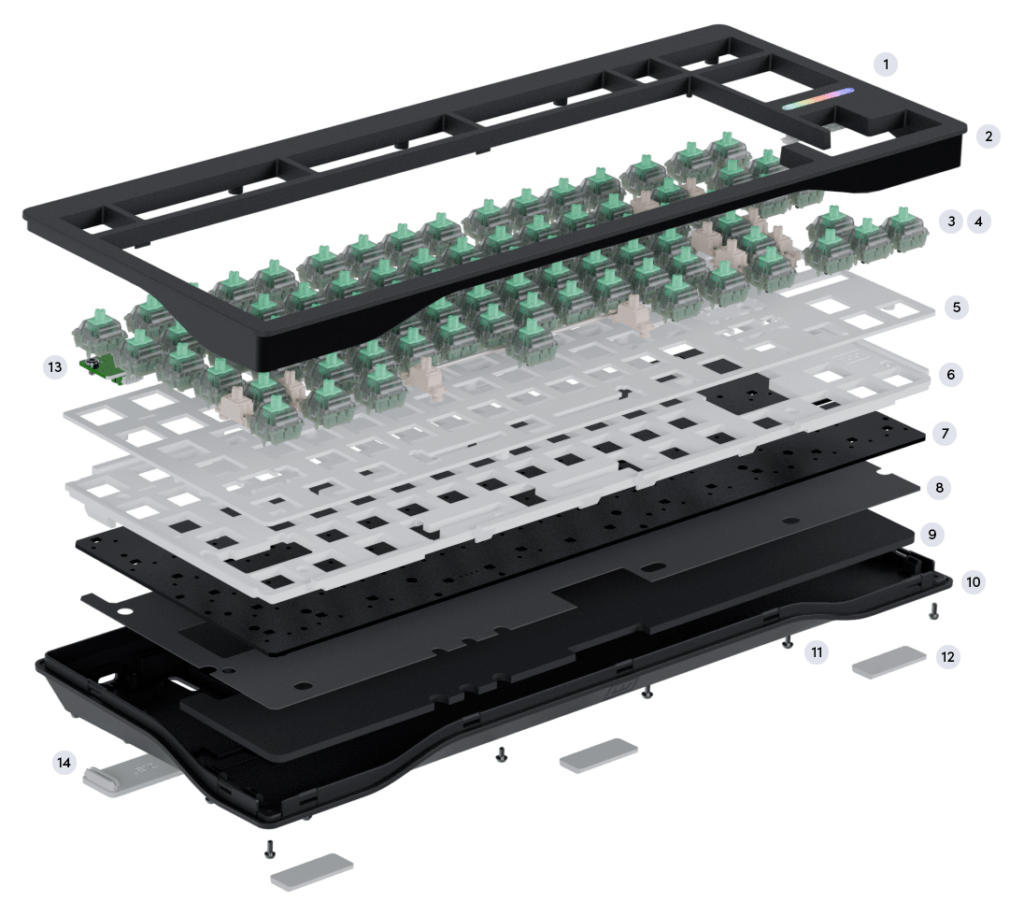
Going for a stiffer design with gaskets on the PCB might’ve helped accentuate the higher tones of the switch and give the sound more character. It would’ve also allowed for easy plateless configs of the Wooting 80 since the screw-in stabs are already there. There’s also no PE foam inside, so it’s not exactly like they’re embracing the foamed-out sound, either.
The Innards
Before we move on to the bread and butter of the Wooting, let’s first talk about the fundamentals of this keyboard. The Wooting 60, and hall-effect keyboards at large aren’t exactly known for their dominance in this area, but this keyboard is no slouch.
Keycaps
The Wooting 80 is rocking doubleshot PBT keycaps that are shine-through. These are your standard OEM profile seen in many mainstream gaming keyboards, but they do feel and sound a bit more premium. Due to the north-facing RGB, the legends all look nice and bright, especially under low lighting.
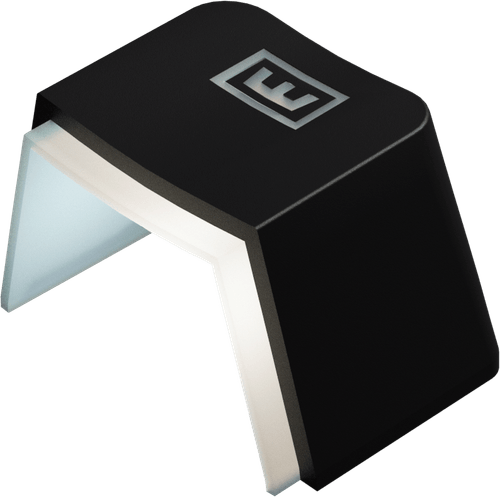
The font is clean, similar to Razer’s, and the shine-through cutouts are about as sharp as they can be. The keycaps also have a gritty texture that grips your fingers nicely and is visible if you look for it. There’s minimal wobble, and all the keycaps are thick, more so than your average gamer-y stuff, but not as much as nice GMK clones from AliExpress.
Switches
Switches are arguably the biggest improvement in the new Wooting 80. The company has upgraded to Lekker V2 linear switches, manufactured by Grain Gold/Hejin (who also make Geon Raptor). These are significant step-ups from V1 Lekkers that could not be saved with any relubing and just had to be replaced by Gateron Jades at the end of the day.
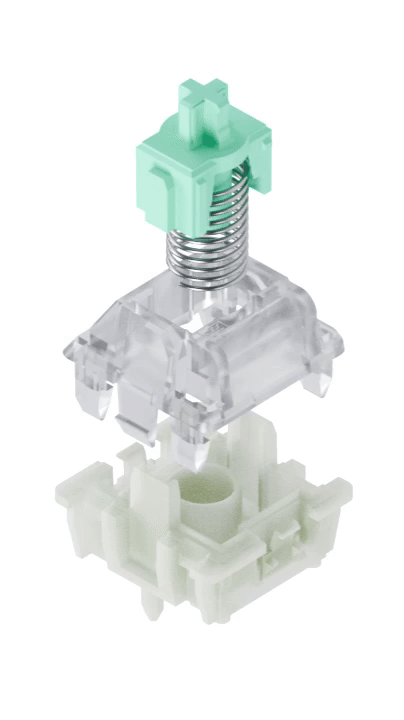
Lekker V2 switches are factory-lubed and come in two variants: 45g and 60g, ours is the 60g version. Due to their magnetic nature, they have a dynamic actuation point anywhere from 0.1mm to 4mm. These feel very comfortable to type on, though there’s a bit of a mushy feeling that makes it feel like these are silent switches.
This is because Lekker V2s do not have a traditional closed-off bottom like some of the latest hall-effect switches. That means the magnet in the stem is literally not hitting anything when the switch is fully pressed. This has a dampening effect on sound and feels, resulting in a less satisfying bottom-out.
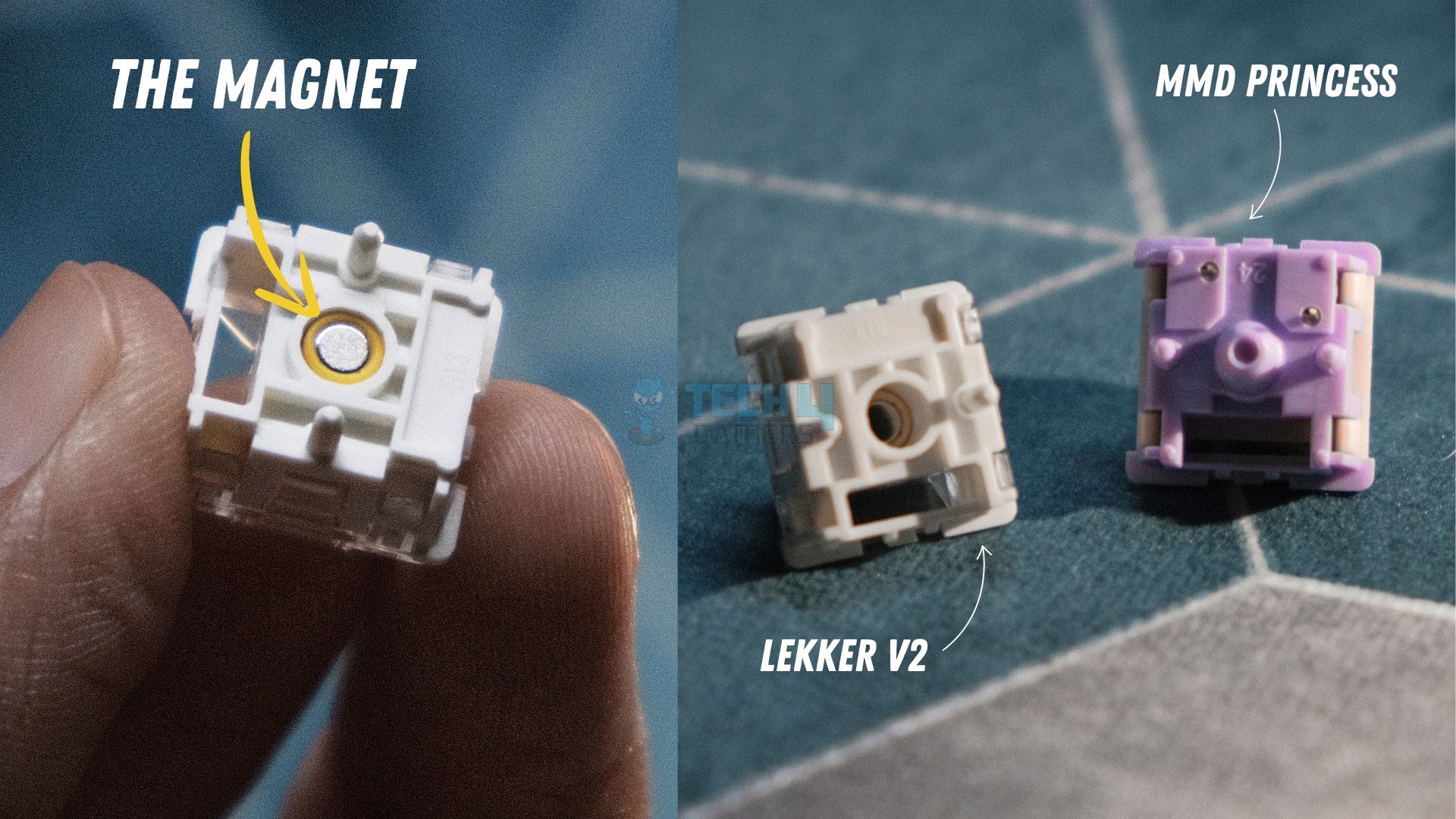
Stabilizers
I may have lied because stabilizers might actually be the most important upgrade in the Wooting 80. Gone are those cheap-feeling, rattly plate-mount stabs, and in come the glorious (the adjective, not the company) screw-in stabs. These are factory-lubed and come pre-installed, which is commendable as even high-end customs omit this.
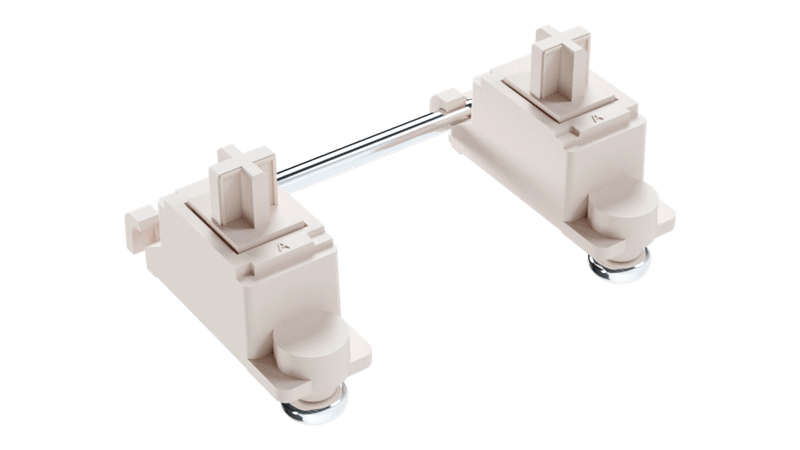
Overall, the stabilizers are good, great even but they’re not perfect. There’s just a little bit of rattle across all of them that is almost weirdly consistent? So, it doesn’t feel like normal annoying rattle. My spacebar, however, did have a bit on uneven lube on the left side which was quickly solved by an injection of Krytox.
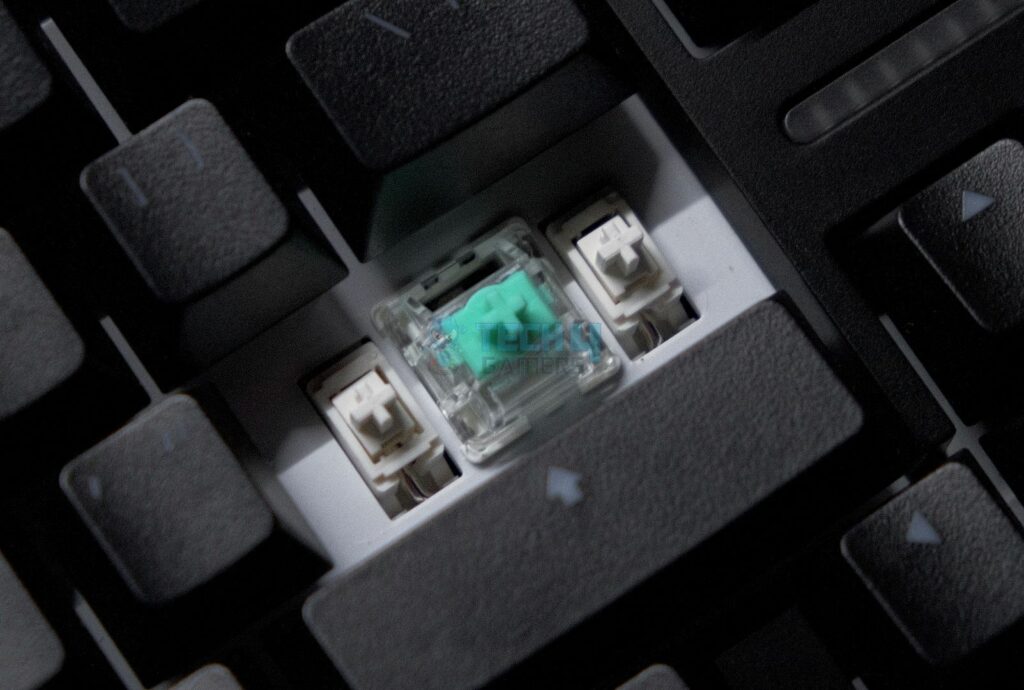
Wootility Software
If there’s anything that keeps Wooting at the top of the hall-effect leaderboard, it’s their software. Wootlility requires no app download or sign up before getting you into the action. It’s entirely online, running in a web browser with only an optional background service (that will launch later) for things like monitoring RAM usage.
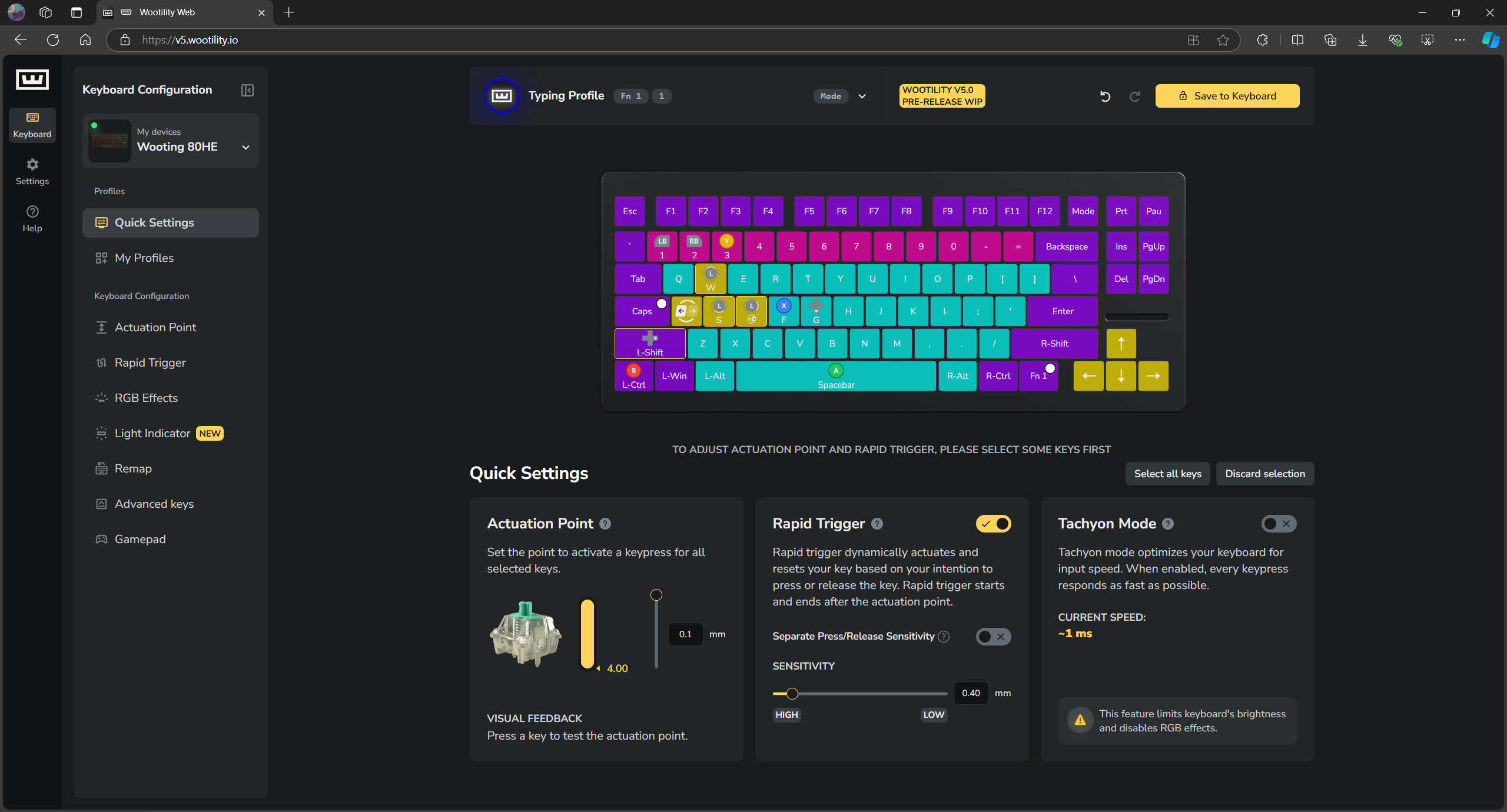
Wooting coincided the release of Wootility V5 with the Wooting 80, which comes with two new features called “Rappy Snappy” and “Snappy Tappy” alongside the classics like Rapid Trigger. The controls for the new LED Bar have their own tab and I have to say it’s extremely detailed and well thought-out for what I assumed was a gimmick.
There’s a whole Effects Studio for both the standard per-key RGB and the LED Bar, where you can go crazy customizing your perfect disco show. My favorite effect is the progress bar, which shows how much of a certain key you’ve pressed, like an analog trigger. Remember I mentioned RAM usage earlier? Yeah, you can show that on this bar, too.
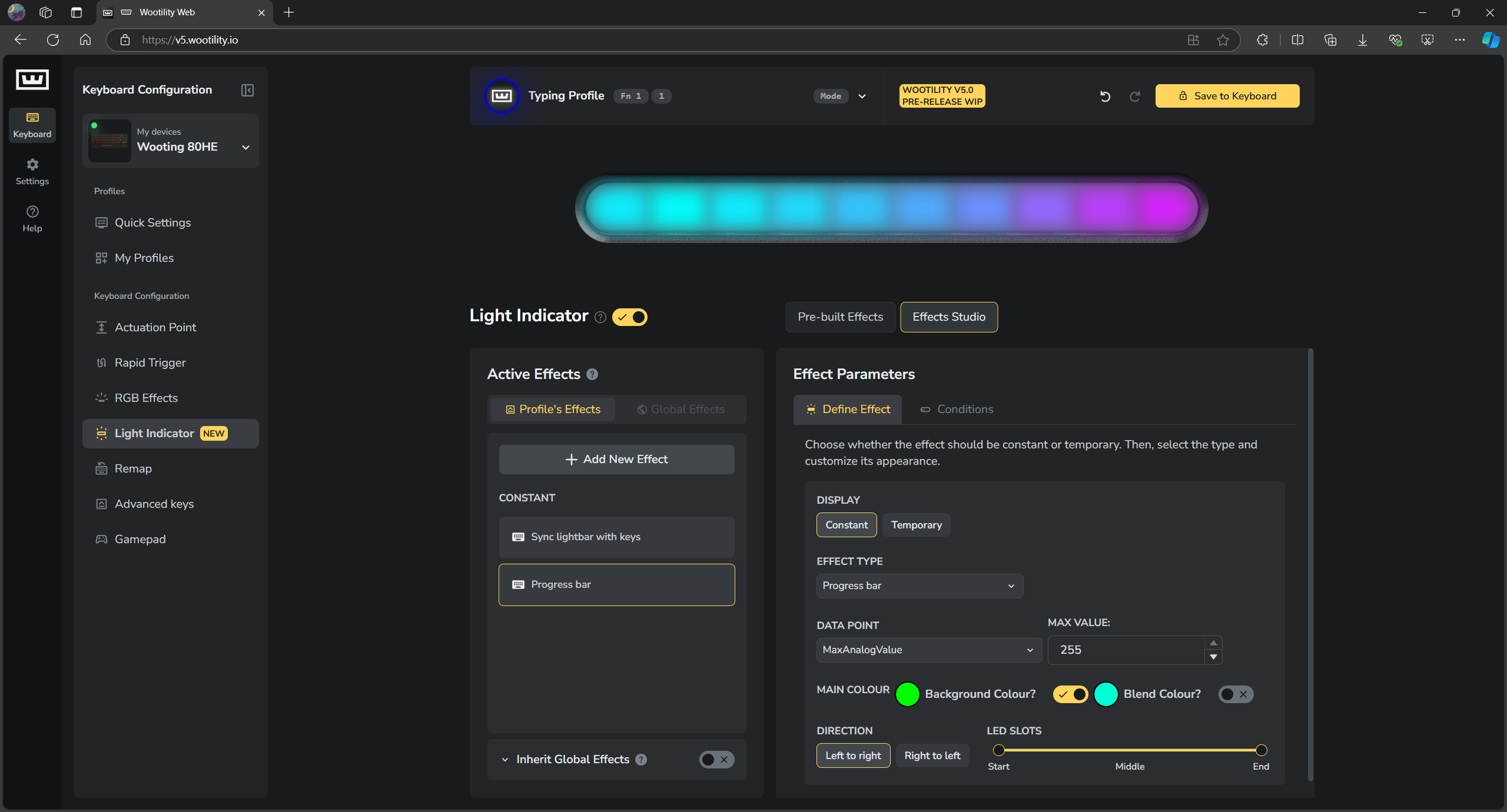
We’ll talk about the actual gaming features in the next section, but the gist is that this software has everything. You can easily create layers with the Fn key, configure different profiles for work and play, assign macros, and even emulate a controller by remapping gamepad buttons, allowing for true analog input for things like racing games.
Overall, Wootility is very polished. It’s intuitive where it needs to be and sticks to basics in departments like key remapping, where you don’t need to bring about a revolution. Updates are quick and effortless (I received 3 while writing this review), and all the buttons have little info boxes to get you up to speed on what they exactly do.
Gaming Performance
It’s time for the main event. As much as it’s nice to look at the little nuances of the switches and the cool lighting, what really matters is how the Wooting can make you a better gamer. And the truth of the matter is, it can’t, well, not unless your hardware is the bottleneck and not your skill. But it can make bridging that gap a bit easier.
Therefore, I tested a bunch of games on the Wooting 80HE and only noticed minor improvements across the board. By now, everyone knows of the adjustable actuation point that you can set to 0.1mm for the key to trigger with a gust of wind instantly. But by combining that with other features, the Wooting goes beyond.
Rapid Trigger
Rapid Trigger allows any key to be reset instantly. For example, you’ve set WASD to actuate at 0.5mm and, being a human, you regularly press those keys past that till, say 2.0mm and rest your fingers around that point while moving. Or just assume that you press them all the way down.
Now, normally, you’d have to release the key and wait for it to come back up to at least 0.5mm before pressing it again for it to register again. With Rapid Trigger, the moment you lift your finger off that key, it resets without ever needing to come back to 0.5mm (or any other actuation point you’ve set). This means you can automatically actuate and reset any key mid-motion forever.
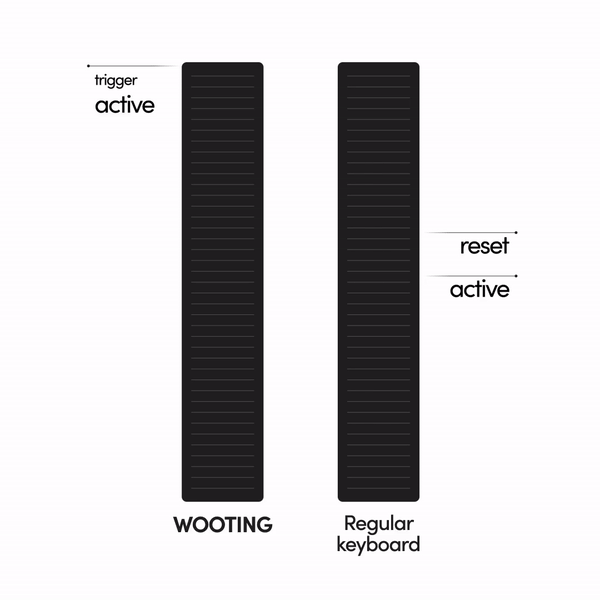
This instantaneous and dynamic reset is particularly effective in games like Valorant and Counter-Strike, where precise movement is imperative to win fights. You don’t the need to return to the actuation point before the next press, giving you an edge in response time. But, once again, it’s not magic; if you were already slow before Rappid Trigger, you’ll still be slow afterwards.
Snappy Tappy & Rappy Snappy
Building upon Rappid Trigger, we have two new features that are just rage-inducing names for SOCD. In simple words, what happens if you press left and right at the same time? Or even press right when left is already pressed? This kind of input is very common for counter-strafing and jiggle-strafing.
So, both Snappy Tappy and Rappy Snappy work to solve this conundrum, but in opposite ways. Say you’re spamming A and D together, if you have Rappy Snappy enabled it will detect which key is pressed further and only register that input while ignoring the other. If both keys are fully pressed, both will be registered.
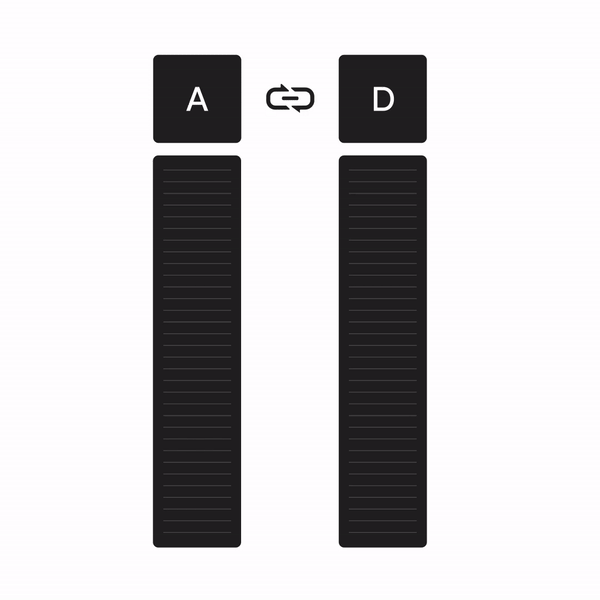
Snappy Tappy is actually a bit more thorough and has three options. By default, it will detect the most recent key you pressed and actuate only that while releasing the other one. You can also choose absolute priority for a key in which the system will only accept the other key’s input if the main key is not already pressed.
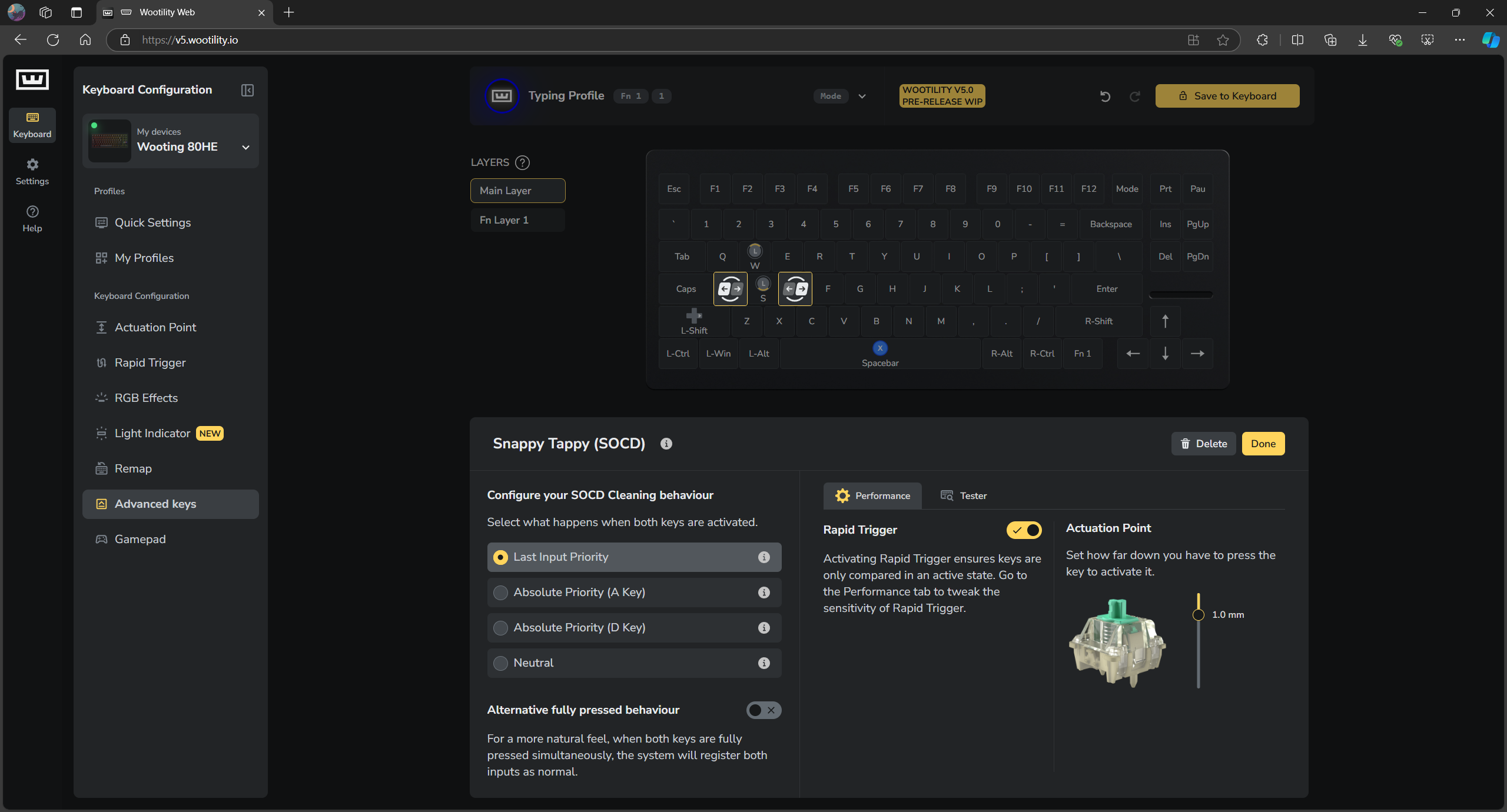
In the end, these SOCD solutions are like auto-tune for keyboard input. While null bind scripts have been around for a while, moving it to hardware truly changes the game. It takes the skill out of precise key inputs, which is why Valve already banned it in Counter Strike.
Moreover, the Wooting 60 has already had these features through a software update for a few months now, so it’s not new, but still powerful. Optimum Tech has called it basically cheating, and I agree—it makes strafing and spraying while dodging fire much easier.
Mod Tap & Dynamic Keystroke
Dynamic Keystroke is really cool and Wooting describes it perfectly as “next-level Macros“. You can take any key and set different inputs based on the dynamic actuation point. Essentially, how much you press a key determines what it actually does. So, it’s not just multiple keystrokes triggered by one keystroke but actually controllable each time.
A pretty simple example I set up was assigning A, B, C, D to the A key. When you just start to press A, it registers A, when you are halfway through the key travel, it actuates again to register B, at about 75% actuation it registers C and finally when bottomed-out it registers D. So, if you do a full quick tap, it types ABCD together just like a macro.
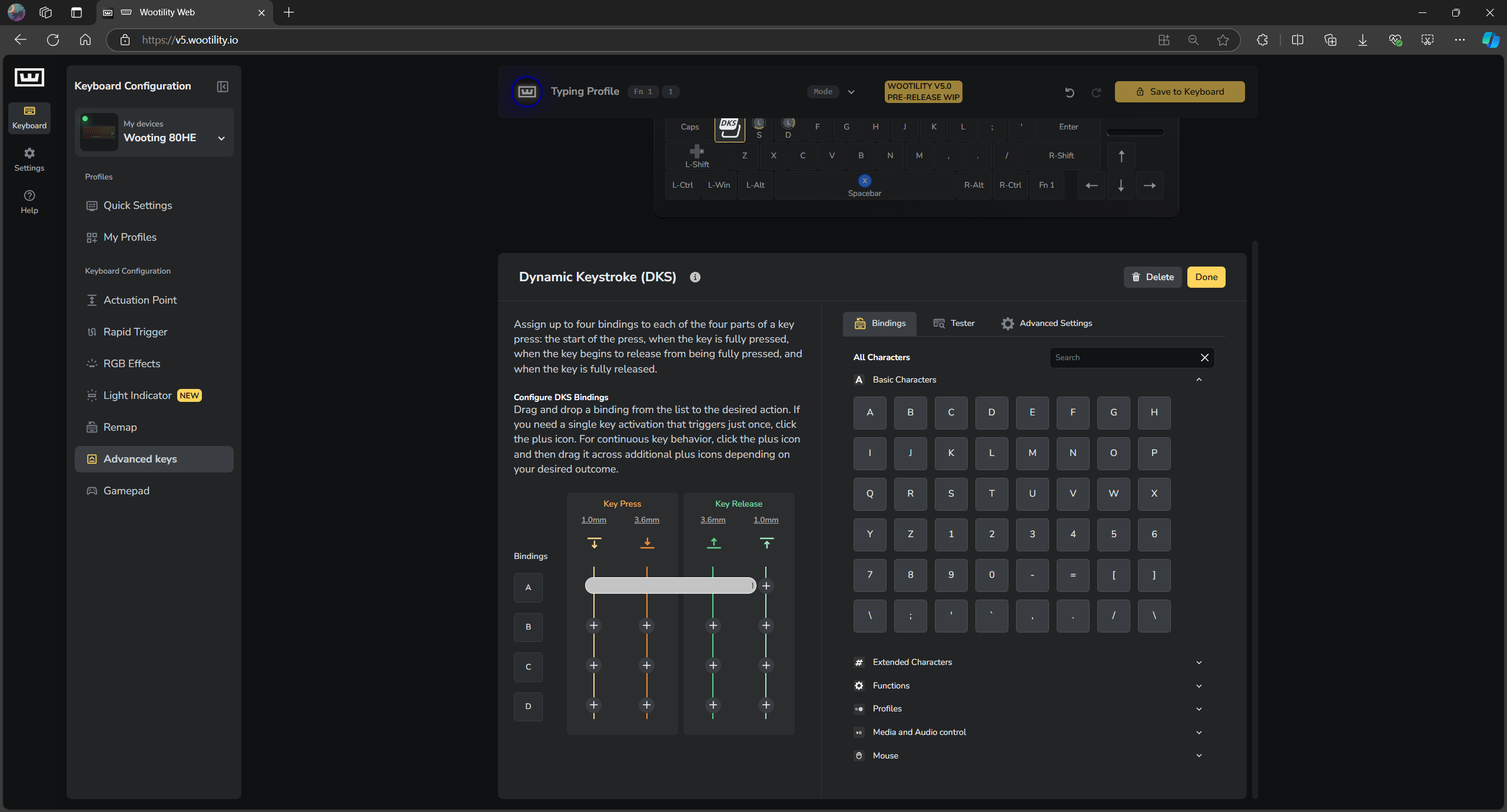
Mod Tap seems pretty tame compared to this; it doesn’t exactly leverage any magnetic wizardry to register inputs. All you need to do is select any key and give it two states: normal press or a press and hold. Either will do different things, for example Backspace key deleting characters when holding it down but going back on a browser page with a tap.
There’s also Toggle Key which allows a key to toggle itself on continuously, aka be pressed down even when you lift your finger off the key. At the same time, if you press and hold that key, and then let it go it will work as normal and reset. This can be useful to set up on your crouch button where it will allow you to hold to crouch and toggle crouch at the same time.
Typing Experience
The Wooting 80 is a major step up from the Wooting 60 in terms of sound and feel. This update puts Wooting back in line with the best hall-effect keyboards that don’t compromise on the fundamentals. The sound signature here is low-pitched, almost muted, very much going for that “thock” appeal.
As you can hear in the sound test, the keyboard sounds… fine. It’s definitely not bad and, in fact, for gaming keyboards this is S-tier but in the larger world of the custom keyboard world, even budget boards like the Aula F87 Pro smoke this. However, we have to keep in mind the context of the hall-effect switches.
Due to the non-traditional stem, the sound is a bit dampened. Typing on it feels like there’s little pieces of foam stuck to the stems to make sure there’s a soft bottom out. The stabilized keys feel a bit better. All that said, the stock experience is still satisfying, and I don’t feel the need to mod anything.
Should You Buy It?
Buy It If:
✅ You want the best gaming keyboard that offers bleeding-edge features which can genuinely be the difference between a win or loss for you.
✅ You care about innovation and want to stay on top with new functions like SOTC being added through regular updates.
✅ You appreciate good software that’s clean, easy to use, intuitive, highly polished, and works right in your browser.
Don’t Buy It If:
❌ You want a wireless keyboard since the Wooting 80 is wired only. This is due to the hardware limitation of a hall-effect PCB.
❌ You prioritize sound and feel over gaming performance. The Wooting 80 ranks below even budget customs when it comes to that marbly sound.
❌ You’re on a budget and with so many cheaper hall-effect keyboards out now, it’s not necessary to splurge for a Wooting.
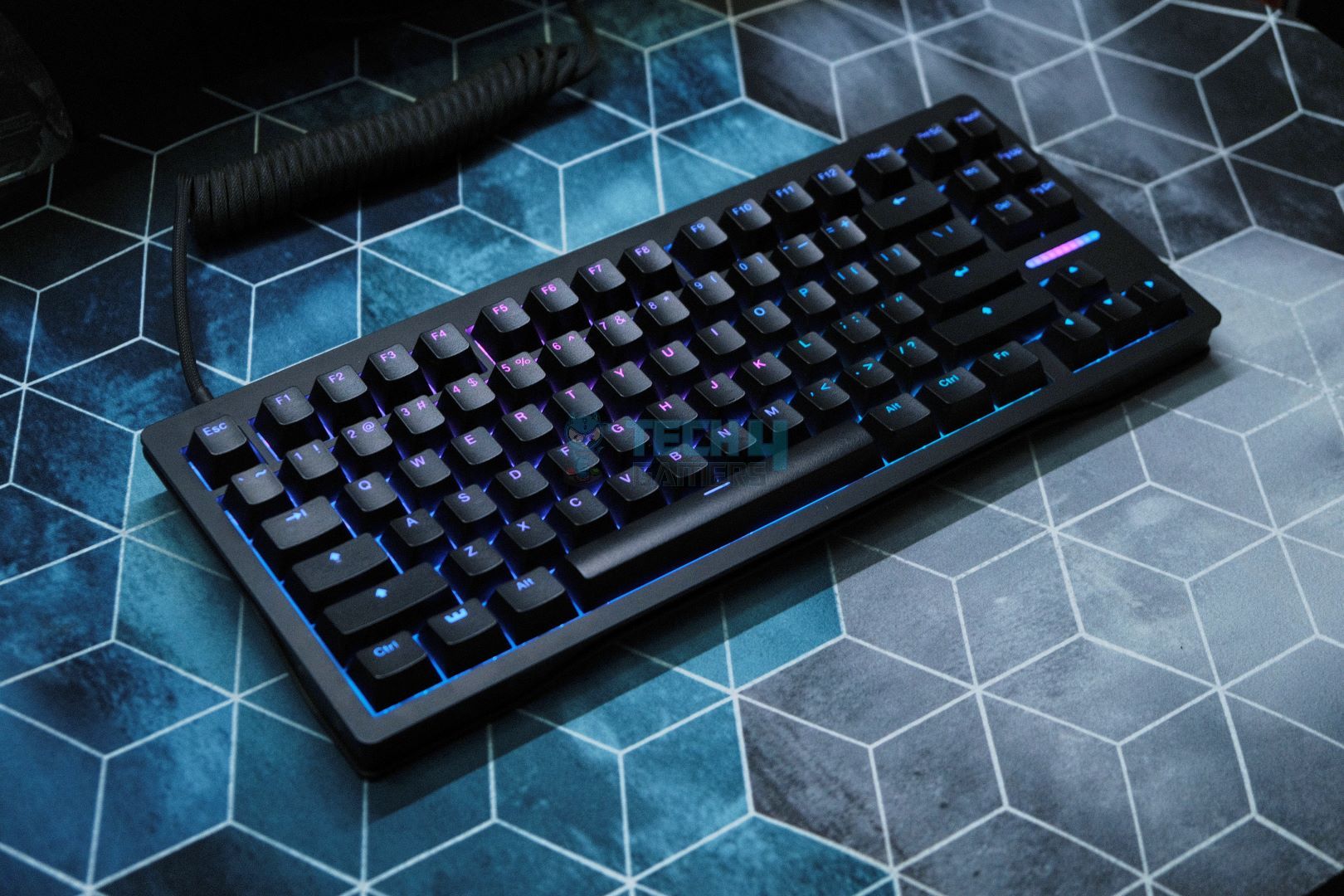
Final Thoughts
My conclusion of the Wooting 80 experience is an easy recommendation. It’s a solid gaming keyboard that offers world-class performance and still has more polish than any of its competitors. The weaknesses of the Wooting 60—switch sound and stabs—have been addressed amicably and the company has genuinely innovated to keep themselves on top.
Still, the alternatives are scarily close now. If someone in a Chinese factory can whip up a Hall effect keyboard with all the same features but half the price without sacrificing the build quality, switches, or keycaps, then the markets will make it evident; despite its greatness, the Wooting is no longer unparalleled.
What Others Are Using?
Thank you! Please share your positive feedback. 🔋
How could we improve this post? Please Help us. 😔
Born and raised around computers, Huzaifa is an avid gamer and a keyboard enthusiast. When he’s not solving the mysteries of technology, you can find him obsessing over semiconductors, striving to inform the curious.
He’s been modding tech since forever and knows a thing or two about what makes a great typing experience, making him the perfect expert to rely on for your keyboard recommendations! With his IT certification from Google, you can trust him to advise you with deliberation and integrity.
- Favorite Prebuilt: Epomaker P75
- Favorite Budget Option: Tecware Spectre 75
- Favorite Custom Keyboard: TKD Cycle7 / Lucky65 V2


 Threads
Threads